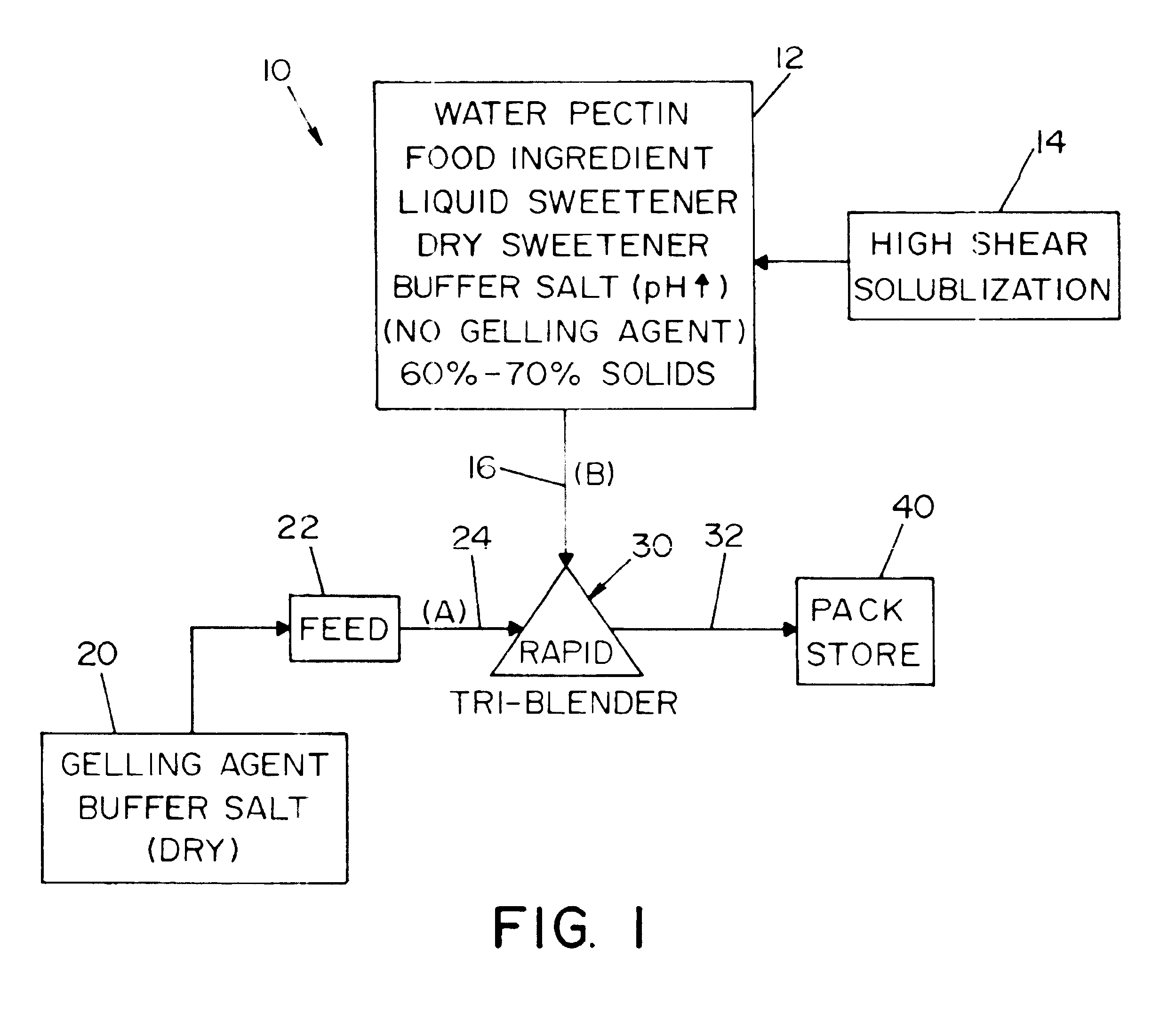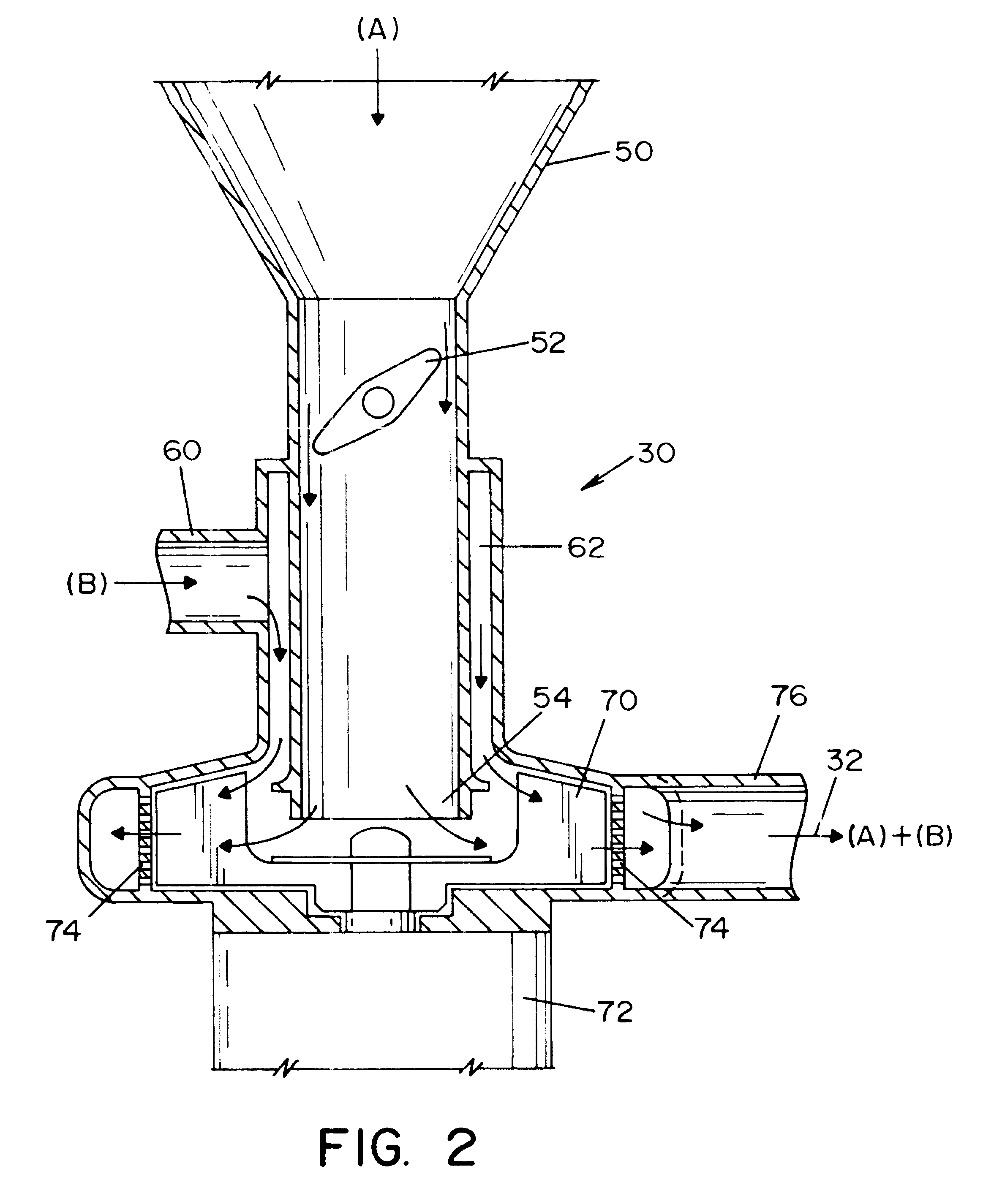Cold process method for making an oven stable pectin base food paste and the paste made by such method
a pectin base and cold process technology, which is applied in the field of cold process methods for making oven stable pectin base food pastes and the pastes made by such methods, can solve the problems of difficulty in fully solubilizing and activating pectin, the pectin process does not have the cost and time advantages, and the prior cold processing method cannot be used with pectin containing fillings, etc., to achieve the effect of efficient pumping and low viscosity
- Summary
- Abstract
- Description
- Claims
- Application Information
AI Technical Summary
Benefits of technology
Problems solved by technology
Method used
Image
Examples
Embodiment Construction
Referring now to the drawings wherein the showings are for the purpose of illustrating preferred embodiment only and not for the purpose of limiting same, FIG. 1 shows a cold processing method as previously explained in detail. The introductory disclosure is incorporated in method 10. Liquid phase 12 includes water, a pectin, a food ingredient, such as fruit puree, liquid sweetener, dry sweetener and a buffer salt to increase the pH value of the liquid phase. This allows dissolution of the pectin without gelling. There is no gelling agent, but the solids are in the general range of 60%-70%. A high shear drive 14 solubilizes the pectin whether it is low or high DE, so that the liquid phase B passing through line 16 is a pectin ready for activation when exposed to a gelling agent. As is known, the gelling agent is acid when the pectin has a high DE and is calcium ions for cross linking when the pectin has a low DE. Of course, high methoxyl pectin also requires solids above about 50%. ...
PUM
 Login to view more
Login to view more Abstract
Description
Claims
Application Information
 Login to view more
Login to view more - R&D Engineer
- R&D Manager
- IP Professional
- Industry Leading Data Capabilities
- Powerful AI technology
- Patent DNA Extraction
Browse by: Latest US Patents, China's latest patents, Technical Efficacy Thesaurus, Application Domain, Technology Topic.
© 2024 PatSnap. All rights reserved.Legal|Privacy policy|Modern Slavery Act Transparency Statement|Sitemap



